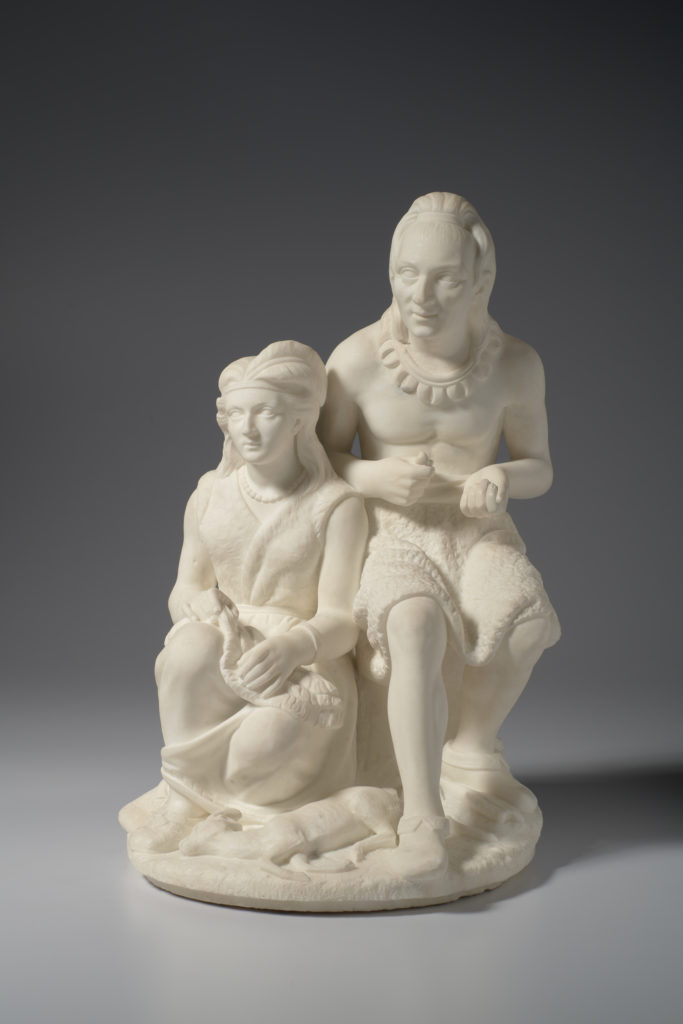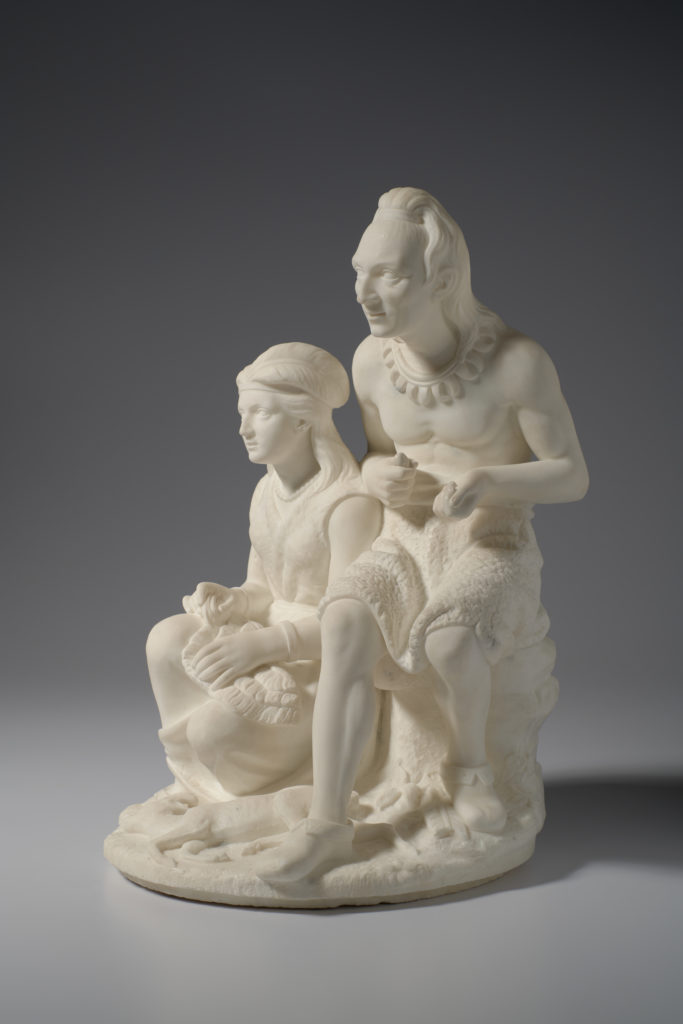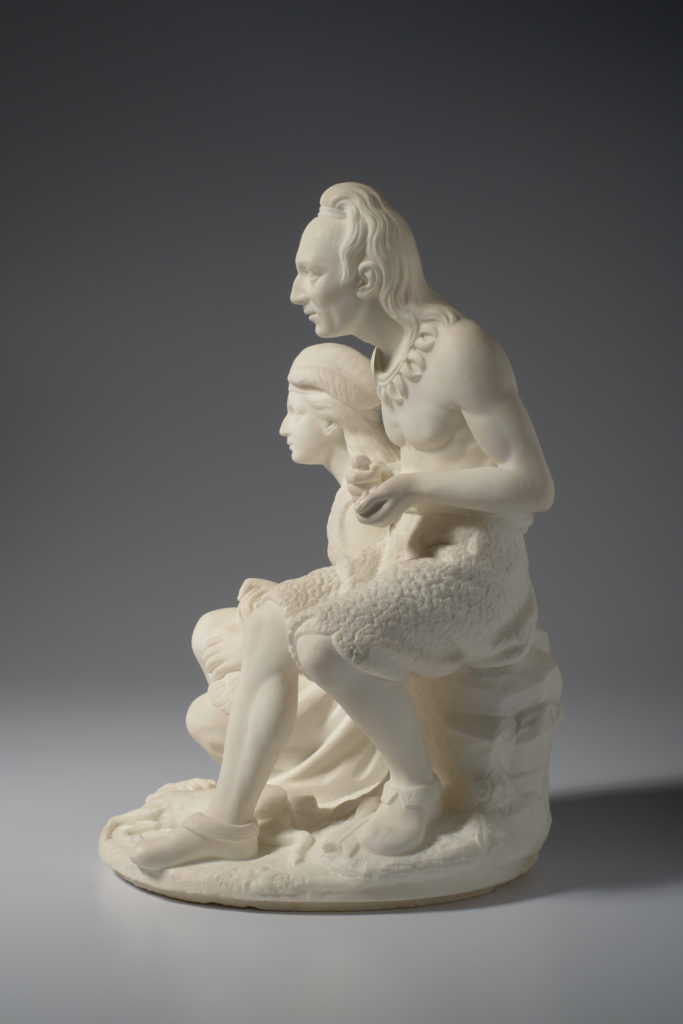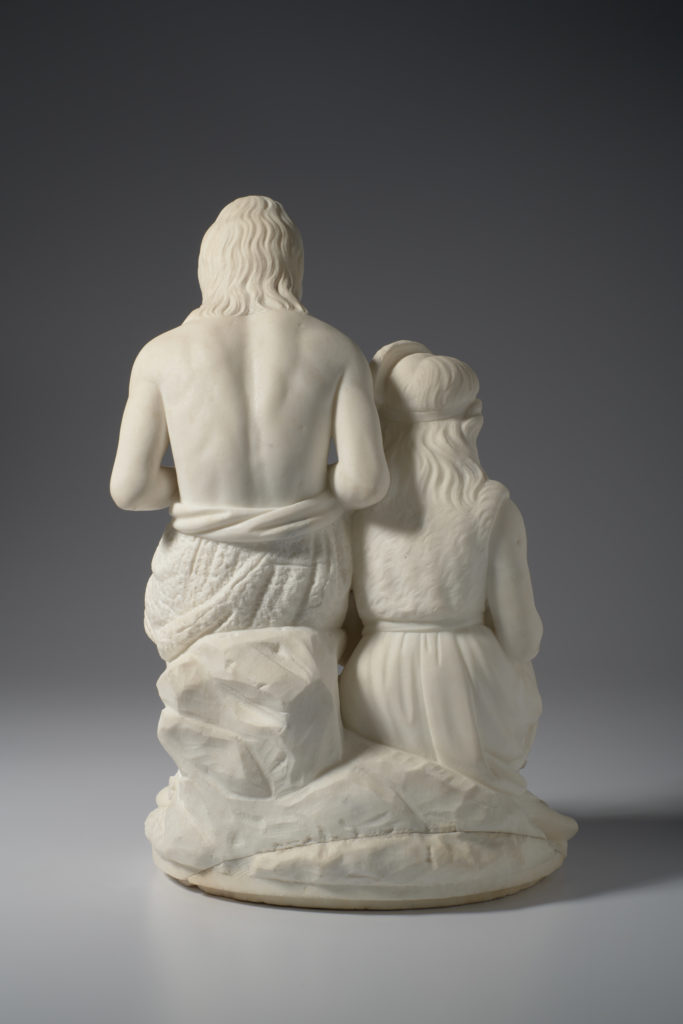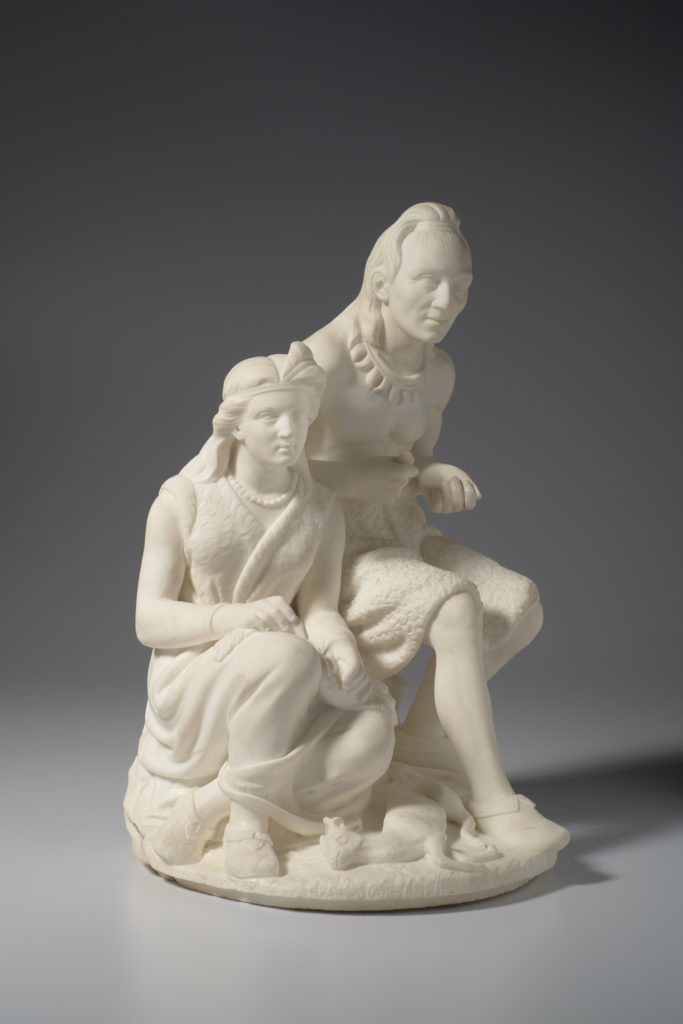Old Indian Arrowmaker and His Daughter (work of art)
Artwork Info
Key Ideas
- Edmonia Lewis often represented her Black and Native American heritage in her sculptures. She gained international recognition at a time in history when women artists and artists of color had fewer opportunities than their white male counterparts.
- This sculpture depicts a scene from an epic poem by Henry Wadsworth Longfellow.
- The woman depicted in this sculpture is a Dakota woman named Minnehaha, and the man is her father. Minnehaha is shown plaiting, or braiding, mats while her father carves arrowheads. The deer lying at their feet was a gift from the Ojibwa chief Hiawatha.
Learn More
Edmonia Lewis was an American sculptor of Black and Native American (Anishinaabe/Ojibwa) heritage. Her subjects often related to her multiracial identity. She explored the abolition of slavery, Black emancipation, and Native American stories in her work.
Lewis spent most of her career living in Rome, where she had more opportunities to succeed as a woman artist of color. In America she relied on abolitionist patronage, but in Italy she gained international recognition as an artist. Lewis was Catholic, and living in Italy allowed her to practice her religion more freely. In Italy she also received professional support from Charlotte Cushman, an important figure for expatriate sculptors in Rome, and Maria Weston Chapman, a dedicated abolitionist.
Between 1866 and 1872, Lewis created several sculptures inspired by Henry Wadsworth Longfellow’s epic poem The Song of Hiawatha (1855). This sculpture portrays Minnehaha “plaiting mats of flags and rushes,” while her father makes “arrow-heads of jasper.” They are shown looking up as if to welcome the Ojibwa chief Hiawatha. The chief has just given Minnehaha a deer as a gift, to show his romantic interest in her. Lewis’s sculpture honors Indigenous cultures and their creative practices. It depicts two generations of Dakota artists, father and daughter, in the act of making traditional objects. The Dakota are an Indigenous people of North America and First Nations band government. They are located in Minnesota and western Wisconsin, where the Dakota have lived for generations along the region’s lakes and rivers.
Additional Resources
Resources for Teachers:
- Read an article about Edmonia Lewis.
- Read another article about Lewis to explore her life and work.
- Watch a video to learn more about the artist.
Resources for Students:
- View another sculpture by Edmonia Lewis.
- Watch a video about this sculpture and learn more about Lewis’s life and work.
- Read an article about the artist.

